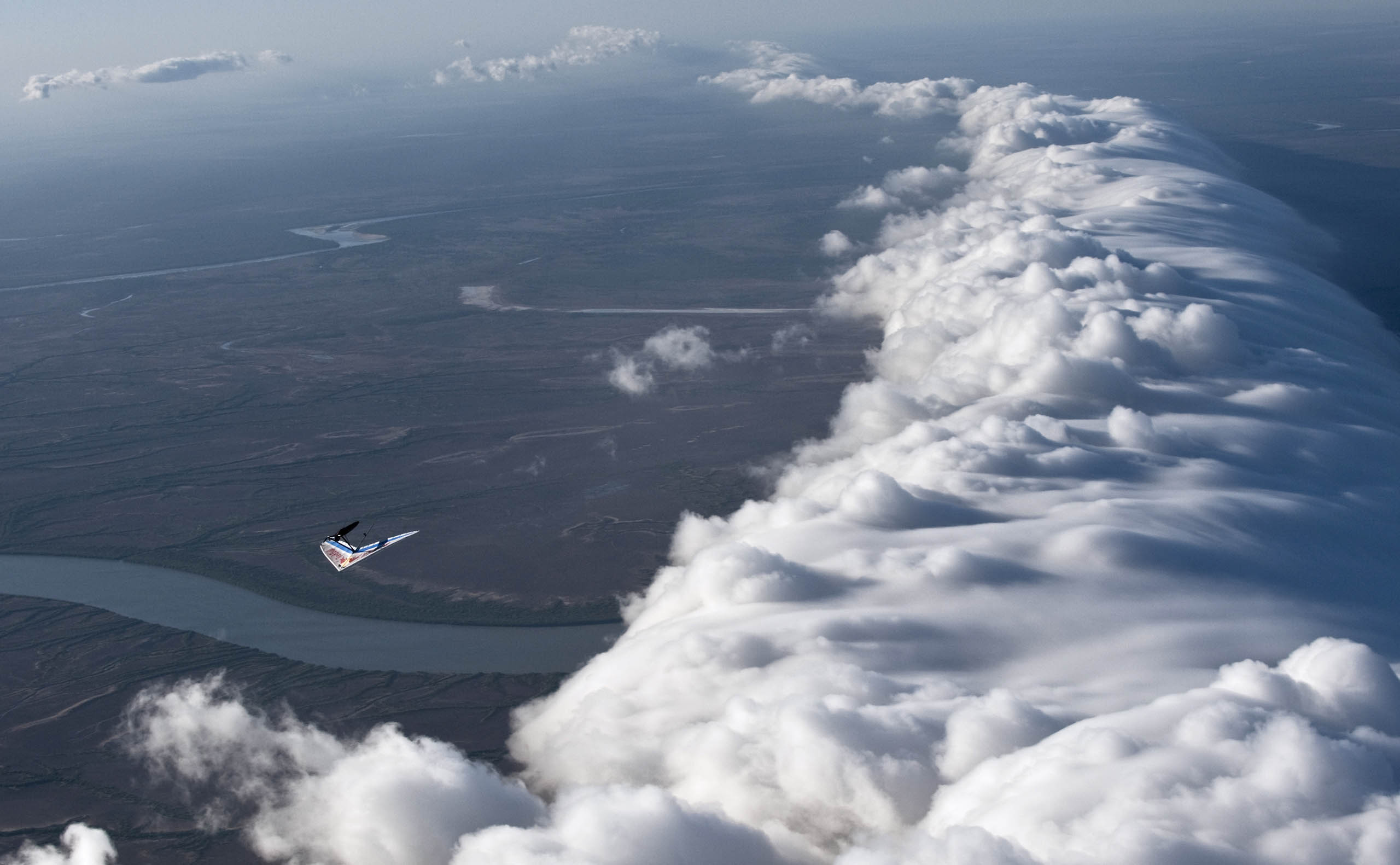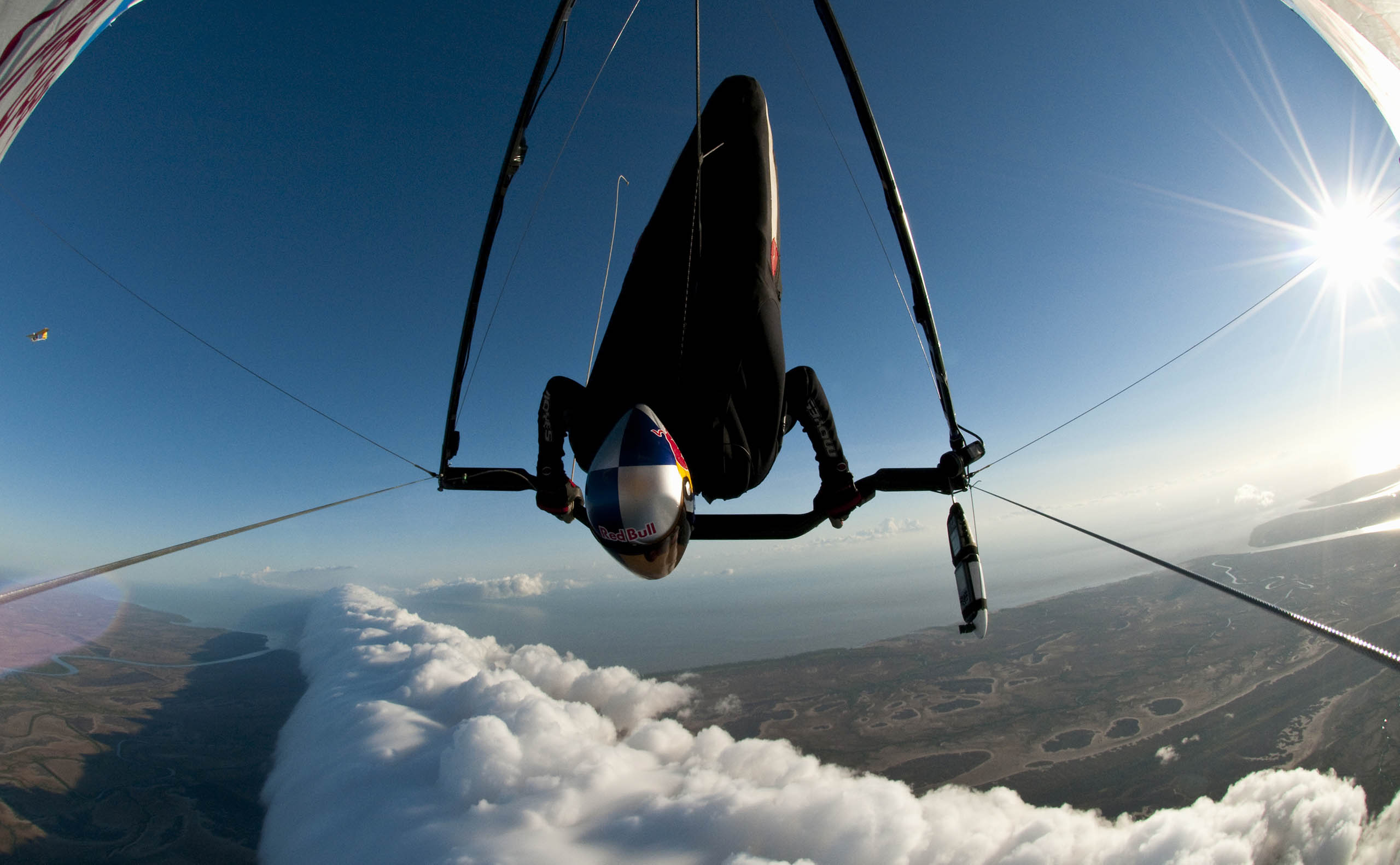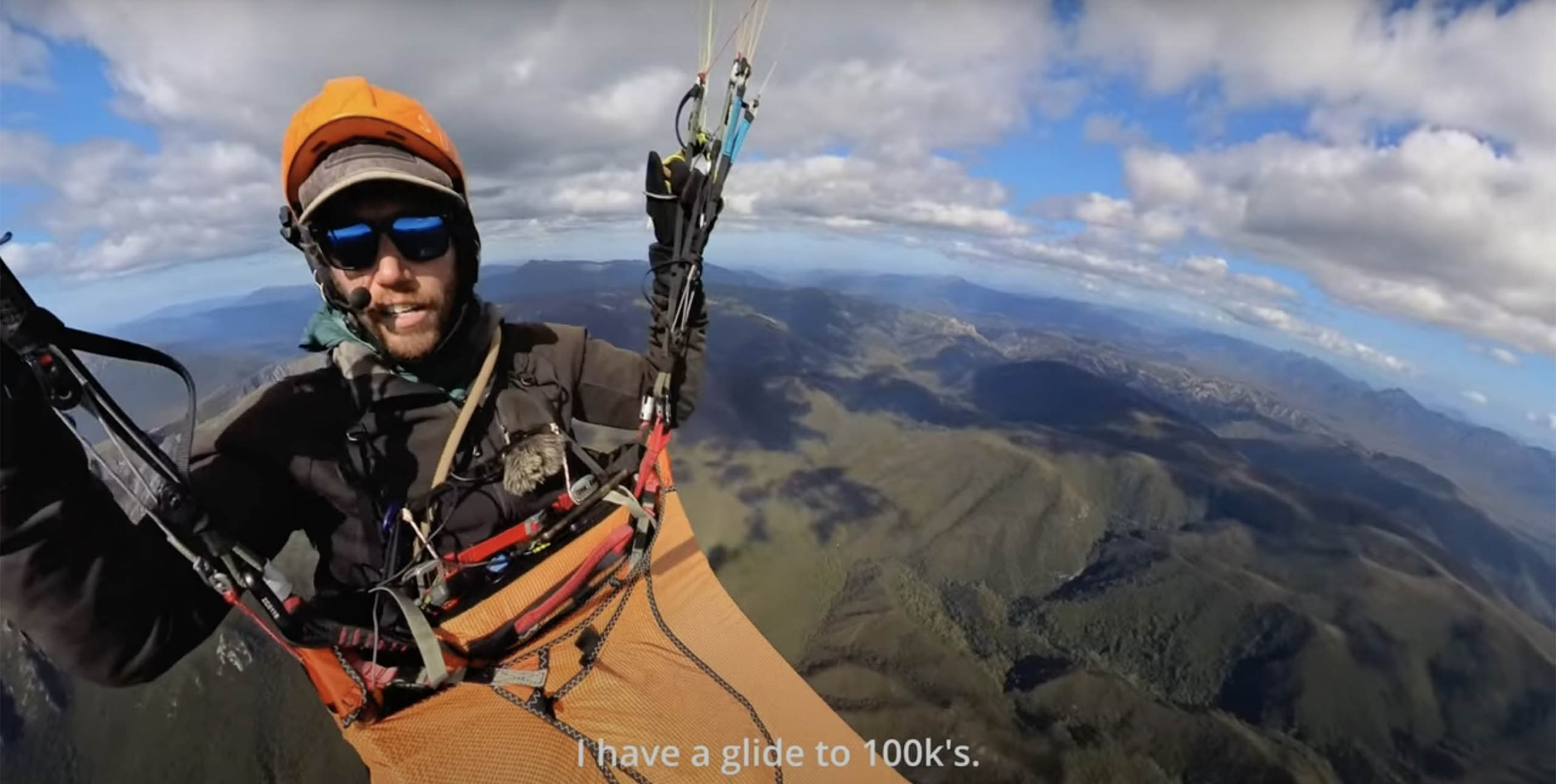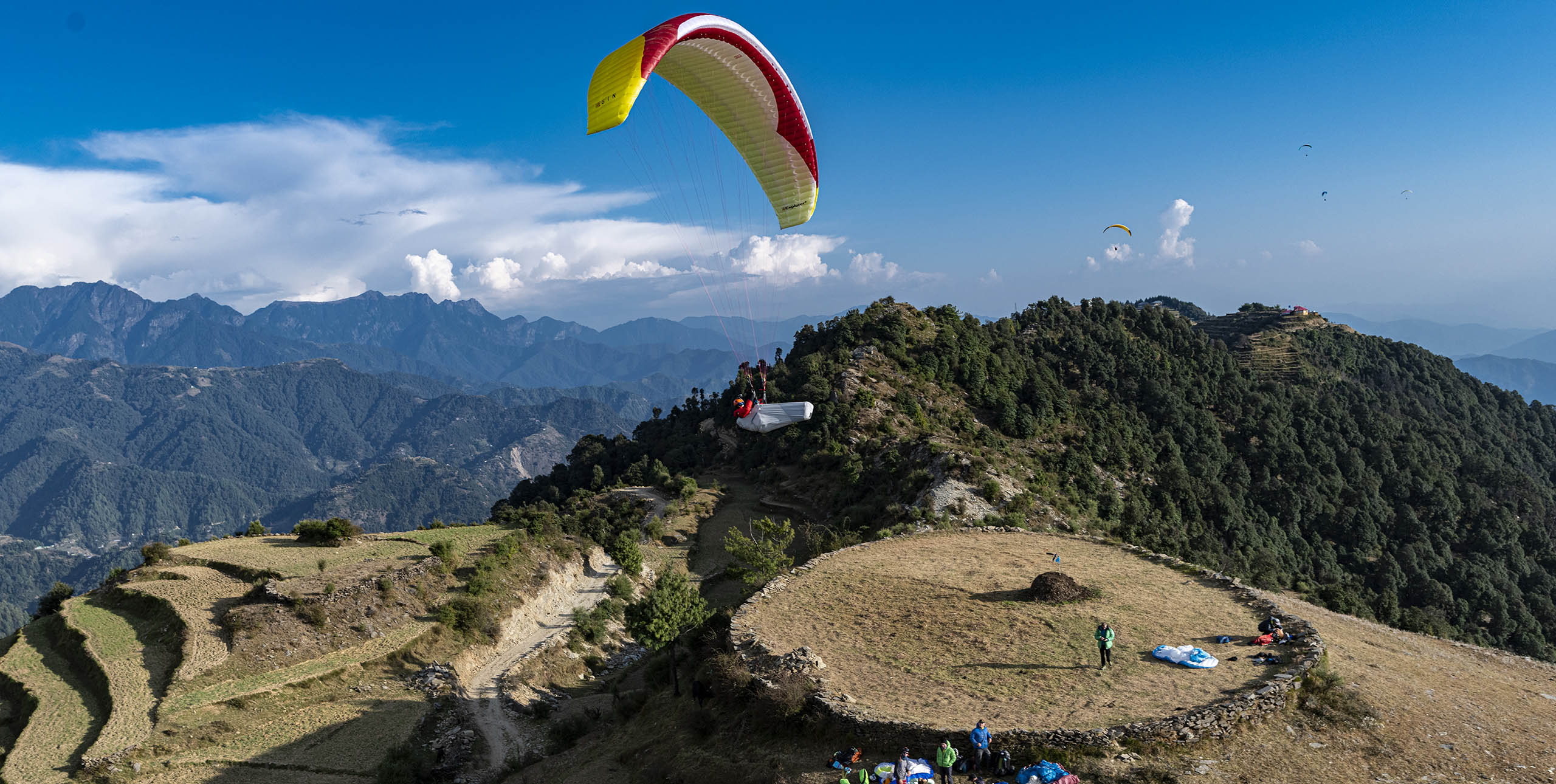
Sky Tsunami: Flying Australia’s Morning Glory
6 September, 2024, by Ed Ewing | Photographs: Mark Watson / Red Bull Content PoolIn September 2009 Jonny Durand became the first hang glider pilot to fly the Morning Glory, a rare rolling cloud phenomenon in northern Australia
“It was the best moment of my life.” Superlatives come easy in this sport but on 16 September 2009 Australian hang glider pilot Jonny Durand really did have an epic day.
Towing into the sky at dawn near Burketown, Queensland, Australia, Jonny released onto one of the world’s rarest, most impressive cloud formations and surfed along its edge for nearly two hours. For good measure he looped his Moyes Litespeed glider too, becoming the first hang glider pilot to be filmed flying acro above the Morning Glory.

Described as one of the world’s “most exotic” meteorological phenomena the Morning Glory is a travelling wave cloud that, under certain conditions from July to November, forms above the Gulf of Carpentaria and rolls across the sky above northern Queensland. It can be up to 1,000km long and can travel at 80km/h.
Flying it involves mounting an outback towing expedition and a lot of patience: hang glider and sailplane pilots hunting for Morning Glory flights have been known to wait weeks, and still not fly it. Paragliders can’t fly it because they are not fast enough, and would fall into the rotor behind the cloud.
Jonny and his team flew two Morning Glories, one on 15 September 2009 and one the day after. The first flight saw him looping in front of the cloud on a 45km “ride of my lifetime”. The second lasted 1 hr 45 minutes and covered 68km.

After towing up through early morning fog Jonny and the tug plane popped out into the blue.“When I looked to the right I saw the biggest wave of cloud I have ever imagined,” he reported that same day on his blog. The bank of cloud looked “like a 1,000 m high ski jump”.
He said later: “It was the best moment of my life, but it could have been the scariest as well. It’s like a tsunami in the sky. Literally I’d just been towed onto the crest of the biggest wave in the world.”
The flights were filmed for a film project called the Red Bull Glory Glide.

How Does it Form?
It is thought that colliding sea breezes above the Cape York peninsular in northern Australia cause the Morning Glory. The breeze from the Coral Sea coast blows in from the east and the breeze from the Gulf of Carpentaria blows in from the west. They meet in the middle and during the day create a convergence line above the peninsula.
At night the air cools and descends. At the same time a surface inversion forms over the gulf. The densities in this stable layer are different above and below the inversion. The air descending from the peninsula to the east goes underneath the inversion layer and generates a wave or series of waves and travels across the gulf like ripples in a lake. The air rises in the front of the wave and sinks behind.
In the early morning, the air is saturated enough so that the rising air in the front produces a cloud, which forms the leading edge of the wave, and evaporates in the back: the Morning Glory. The cloud lasts until the surface inversion is burned off by the heat of the day.
First published in Cross Country 126 (Oct/Nov 2009)








